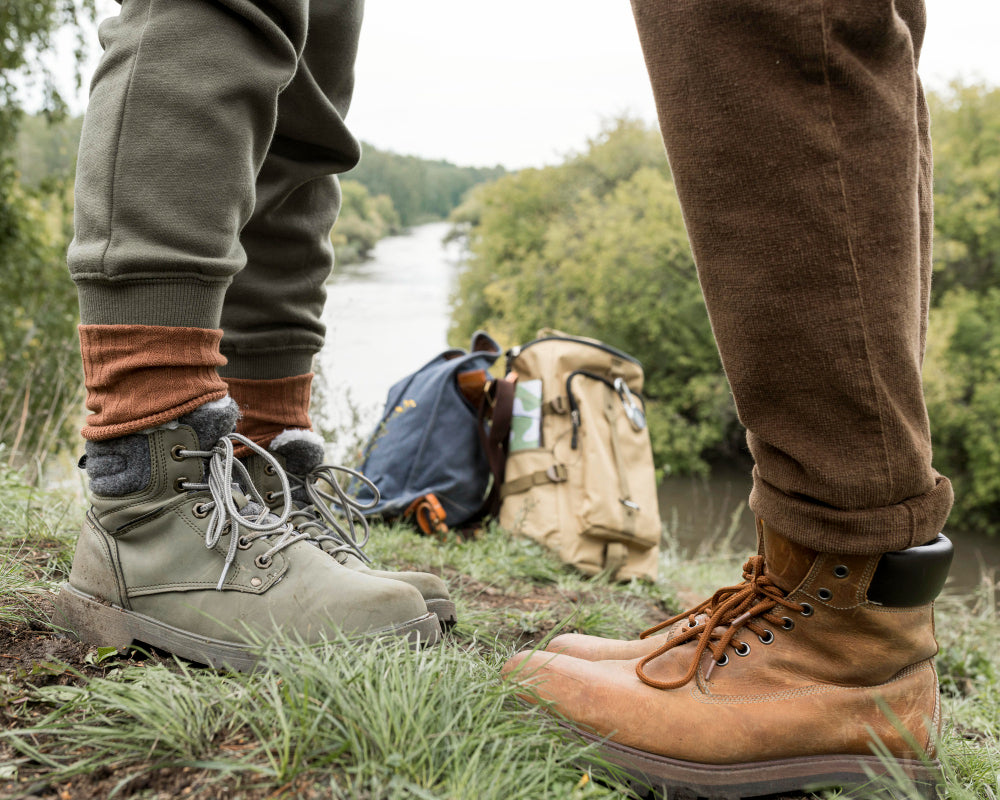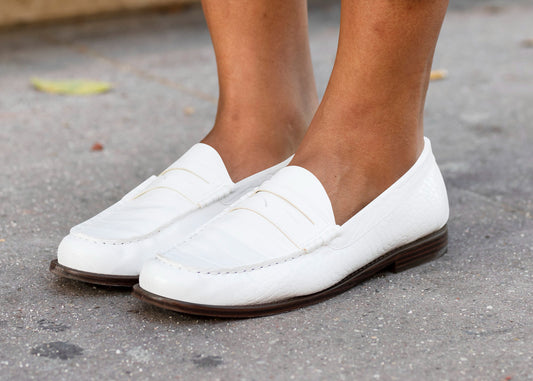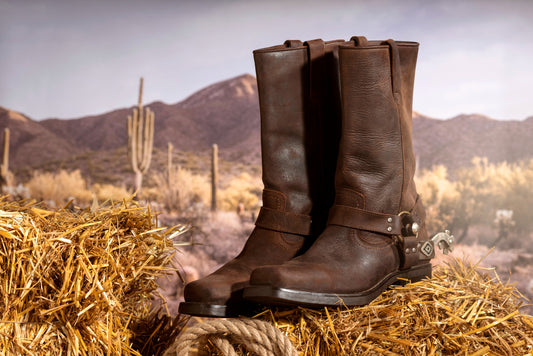How to Clean Hiking Boots - A Step-by-Step Guide

Do you want to clean your hiking boots but don't know where to start? New hikers often scrub their hiking boots with grime and dirt randomly. Without using the right boot cleaner to clean your boots or shoes, they are subject to weaken and be less durable.
Follow this step-by-step guide to learn how to properly clean your hiking boots and maintain their quality for your next adventure.
How to Clean Leather Hiking Boots
Materials Needed to Clean Leather Boots
- Old toothbrush
- Crepe brush for nubuck and suede boots
- Soft cloth/towel
- Waterproofing spray
- Leather cleaner or saddle soap
- Clean water (tap water is fine)
- Mild detergent or mild dish soap (optional)
Step-by-Step Guide to Cleaning Leather Hiking Boots
- Step 1: Remove Laces - Don't just randomly brush your hiking boot uppers right away. First, remove the laces and set them aside as you'll clean them later on.
- Step 2: Remove Debris - Use a soft brush or cloth to wipe off any excess dirt or debris on the boots' surface. If you have a boot brush that is specifically made for this purpose, use it to remove any chunks of mud that may be stuck in the grooves.
- Step 3: Clean the Soles - Take out any debris or small rocks stuck in the outer sole. Use an old toothbrush to gently scrub away dirt and grime, especially around the edges.
- Step 4: Wash with Soap - Mix a mild detergent or dish soap with lukewarm water. Dip a soft cloth or brush in it and start washing your boots' uppers, moving from top to bottom. Avoid using harsh chemicals as they can damage the leather.
- Step 5: Rinse and Dry - In running water, rinse off any remaining soap and dirt. Use a clean towel or cloth to pat dry the boots. Make sure not to wring them as it can cause creases on the leather. The drying process plays a critical role in preventing the growth of mold. A dryer can be useful for materials such as Gore-Tex, but it can cause leather to crack, so air-dry them instead.
- Step 6: Remove Tough Stains - If you encounter tough stains such as mud, blood, or oil, use a leather cleaner specifically made for hiking boots. Follow the instructions carefully and test it on a small, inconspicuous area first.
Waterproofing Your Hiking Boots
Now to waterproof your boots, you can use different products that are specifically designed for each type of boots. Choose a spray-on product for smooth leather, and wax-based cream or liquid waterproofing for nubuck and suede boots.
A mink oil or beeswax-based waterproofing product can be applied after you've cleaned and dried your boots. These products tend to darken the leather, so make sure to test it first on a small area.
Before applying waterproofing products, make sure your boots are clean and dry. Hold the spray bottle at least 6 inches away from the boot surface while spraying evenly in light coats. Let the first coat dry for a few minutes before applying another layer.
Don't overdo it, as using too much waterproofing spray can affect the breathability of your boots.
Check out Stone and Clark's Leather Spray for a waterproofing product that is safe to use on leather hiking boots.
Caring for Leather Boots after Cleaning
Your boots will get dirty again, it's inevitable, but you can mitigate the amount of caked-on mud and grit with regular care. After each hike, brush off soil and debris before it dries and becomes more difficult to remove.
For persistent odors or to tackle discoloration, a mixture of baking soda and water can be utilized to gently spot-clean the affected areas. Rinse thoroughly and let your boots air dry.
Remember that routine maintenance not only keeps your boots looking good but also prolongs their life, letting you hit the trails with confidence time and time again.
Proper Storage for Your Hiking Footwear
For your hiking shoes or any other footwear where traction and insole retention are crucial, storage is essential. Before tucking them away in the closet, give your boots time to air dry after cleaning.
If you store dirty or damp boots, mold growth can occur inside the shoe which causes an unpleasant odor and can even damage the materials.
To store them properly, first, make sure that your boots are completely dry. Stuff them with newspaper or paper towels to help maintain their shape and absorb any extra moisture. Then place them in a cool, dry, and well-ventilated area.
Do not store your boots near heat sources such as radiators, vents, or stoves. These can cause the boots to become brittle or even melt if exposed for too long.
You can also invest in a boot tree or use the cardboard inserts that come with your shoes to help maintain their shape. This also prevents any creases from forming while they are being stored.
Read related article: How to Waterproof Hiking Boots - 3 Effective Methods
How to Care for Your Synthetic Hiking Boots

How to care for your hiking boots that are made from synthetic materials, such as polyester or nylon?
Maintaining your synthetic boots need not be a chore if you follow these simple tips. Synthetic materials are known for their durability and ease of cleaning, especially when they become cake with dirt or covered in mud.
Here's how to keep them in top condition:
- Prevent Dirt Accumulation: After each hike, take the time to dislodge pebbles and remove any mud or debris. This will make it easier to clean as dirt won't have the chance to set in and harden.
- Routine Cleaning: Need to clean hiking boots after each hike? Yes, by doing so, you ensure that the materials are not compromised by encrusted dirt and cake, which can lead to faster deterioration.
- Quick Dry Methods: If your boots do get wet or covered in mud, be sure to air dry them promptly as moisture can degrade synthetic materials faster if left unchecked.
- Spot Clean Trouble Areas: For areas that are especially dirty, use a mild detergent solution to spot-clean the affected sections. Rinse thoroughly to prevent any soap residue.
- Protective Sprays: Use protective sprays designed for synthetic materials to add an extra layer of protection against dirt and water.
By taking these proactive steps, not only can you prevent dirt from damaging your boots, but you'll also maintain their comfort and support, ensuring that they're ready for your next outdoor adventure.
Clean and Care for Your Hiking Boots the Right Way
The right way to clean and care for your hiking boots depends on the materials they are made from. Whether it's leather or synthetic, each type requires different methods of cleaning and maintenance.
By following the steps outlined in this guide, you can ensure that your hiking boots last longer and perform better on the trails. And remember, always read the instructions provided by the manufacturer for specific care recommendations to keep your boots in top shape.





